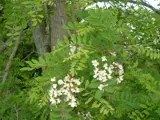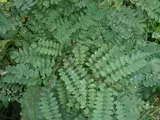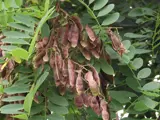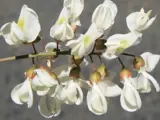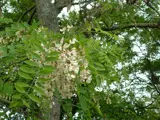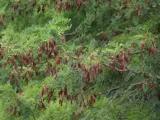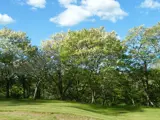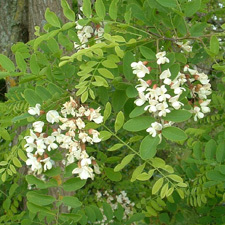 False Acacia
False Acacia
Common name: False Acacia
Botanical name: Robinia pseudoacacia
Management programme: Advisory
False Acacia is native to a few small areas of south eastern America where it also considered a pest plant. It has been widely planted and naturalised for landscaping purposes to multiple countries.
Why is it a pest?
- Reproduces by root suckering and stump sprouting, quickly colonising areas.
- Produces masses of seeds every 1-2 years.
- Competes with native flowering species for bees, reducing pollination success for native plant species.
Where is it found?
It is found throughout the Bay of Plenty region. It likes well drained soils and can be found in dry, sandy sites, unmanaged pasture, disturbed forest, forest edges, roadsides and gardens.
What does it look like?
- False Acacia is a hardwood tree that can reach 30m in height.
- Young saplings have smooth green bark which then turns dark and rough as the plant matures into a tree.
- Flowers from November to January. Flowers have a fragrant smell and hang in droopy clusters.
- Smaller branches have a small spike at the base of each leaf stalk.
- Seed pods are about 10cm long and flat. They are smooth to the touch.
What are the rules?
Advisory
The Bay of Plenty Regional Council does not enforce the control of advisory species. It is landowner/occupier responsibility to manage these pests. Council may provide advice on how to manage or control these species if required.
How do you get rid of it?
Recommended:
- Hand pull or dig out seedlings.
- Stump treatment for larger plants.
- Stem frilling and injection.
- Foliage spray suckering growth and saplings in spring to early autumn. Spray to glisten rather than spray to soak.
Always follow up any control you do with hand pulling new seedlings/saplings.
Plant material can be left to rot down on site or you can dispose of it at a transfer station in general waste.
To inhibit new growth, plant a dense cover of preferred shrubs or trees.
CAUTION: When using any herbicide or pesticide, PLEASE READ THE LABEL THOROUGHLY to ensure that all instructions and directions for the purchase, use and storage of the product, are followed and adhered to.
Read more on pest control advice, information and regulations.
Images

